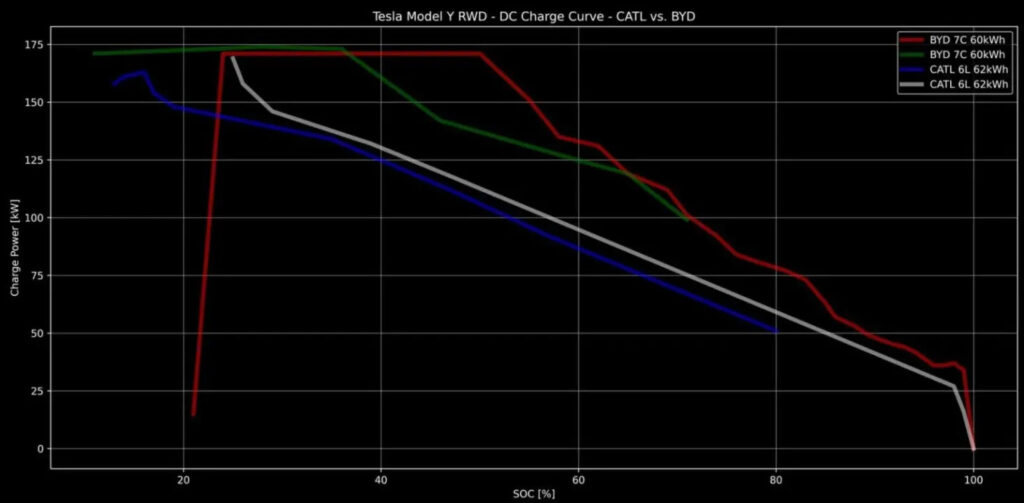The new Tesla Model Y, built with Chinese-made BYD batteries at the Gigafactory in Berlin, Germany, charges significantly faster than previous versions.
Elon Musk must have changed his mind
Recently, what many considered highly unlikely until recently has become a reality. Tesla and BYD have become partners in the production of electric cars. Yet the days are not far off when these rivals were not taken too seriously, and there is even an infamous interview in which Elon Musk literally laughs at BYD’s electric vehicles. But times are changing and both companies are now seen more as the driving force propelling electromobility forward at a rapid pace.
The convergence of the two companies, which were until then seen more as competitors, began to happen last year when Tesla started buying battery cells from the Chinese manufacturer. Tesla is believed to be using BYD’s new “Blade” battery, whose LFP cell has a long-blade format, in its electric cars. The battery cells are used in the new Model Y produced at the Gigafactory Berlin, and already Tesla fans on the German TFF forum are finding interesting differences between the new and existing technology.

Photo by FTT Forum
New battery speeds up charging
The most important fact so far is that the new cells can maintain their maximum charging rate significantly longer than the previous type. The Model Y with the new cell has a similar maximum charging speed to the older Model Y using CATL cells manufactured by Giga Berlin. However, the new cells appear to be able to hold the maximum charging rate for longer and achieve an overall higher charging rate.
In this context, however, it is important to realise that charging is affected by a number of factors that may have nothing to do with the EV itself, such as the charger parameters or the outside temperature. As Electrek points out, it seems that times are looking up again when it comes to charging performance. Thanks to improved technology, the batteries should be charged to 80% in less than 30 minutes. It will also be interesting to measure in freezing winter temperatures, which did not suit the original cells.








Leave a Reply